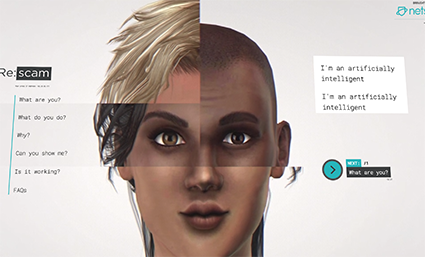In 1995, Joey Skaggs launched his Solomon Project hoax. Solomon (so he said) was a distributed program running on a set of super computers that would deliberate on the facts and evidence of a case and deliver a definitive verdict, eliminating the need for juries and radically reducing the role of judges. CNN fell for the Solomon Project hook, line and sinker. Reality may finally be catching up with Skaggs. h/t Felipe
Robot judges ‘will pass sentence with no human bias’ in AI courts
by Michael Moran
Daily Star
October 19, 2019

Increasing use of AI in legal system points the way to an all-robot courtroom
It’s likely that most people locked in our jails believe that with a better lawyer, a more lenient judge or a more understanding jury things might have been very different for them.
Human error, they will say, is to blame for them being banged up.
But can the human element be removed? Law firms are already using computer algorithms to perform background research other tasks traditionally performed by human staff. And that’s just the beginning.
As computer researchers get closer to creating true Artificial Intelligence, it’s predicted to eliminate most paralegal and legal research positions within the next decade.
The next step inevitably involves artificial intelligences aiding, or even completely replacing lawyers. And if we have robot lawyers, why not automated judges and juries too? Why not a fully solid-state legal system?
Read the rest of this article here »



 The European Commission for the Efficiency of Justice (CEPEJ) of the Council of Europe has adopted the first European text setting out ethical principles relating to the use of artificial intelligence (AI) in judicial systems.
The European Commission for the Efficiency of Justice (CEPEJ) of the Council of Europe has adopted the first European text setting out ethical principles relating to the use of artificial intelligence (AI) in judicial systems.
